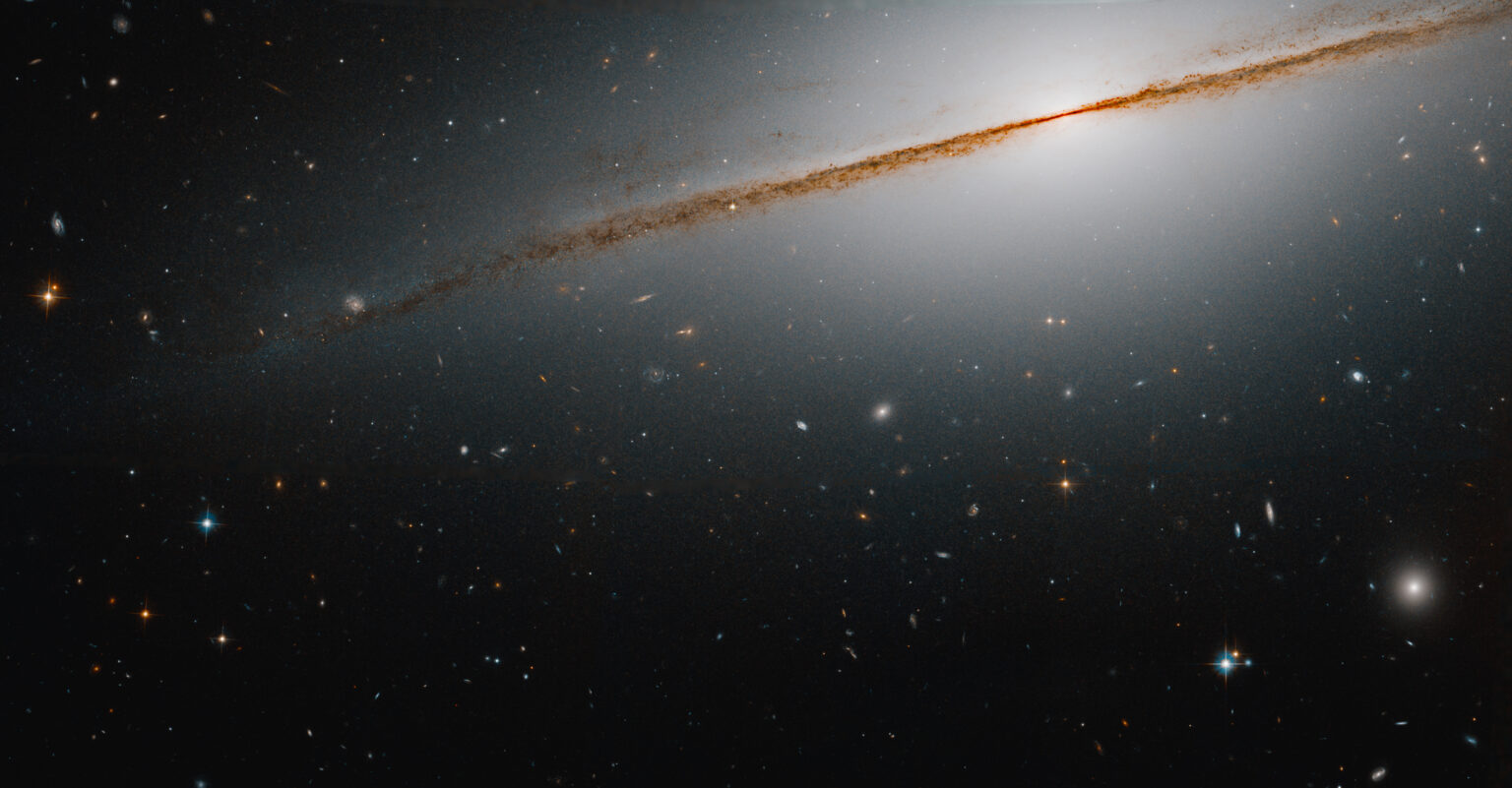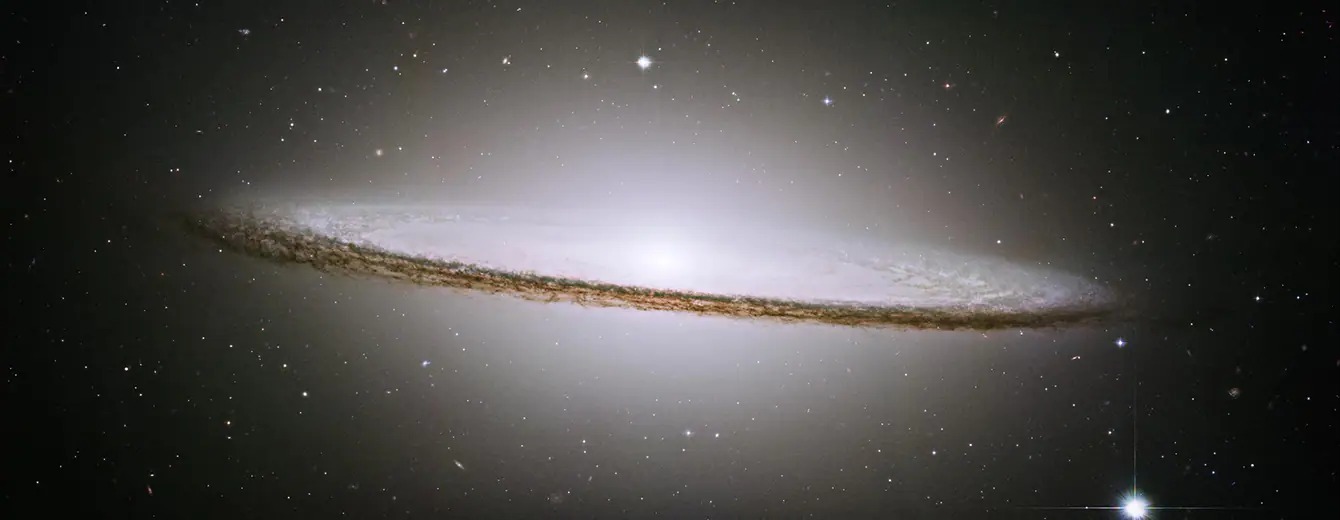This week’s image, captured by the Hubble Space Telescope, shows the Little Sombrero galaxy. It is so named because of its long thin shape with a bulge in the middle, which resembles the shape of a traditional Mexican hat.

The Little Sombrero galaxy, also known as NGC 7814 or Caldwell 43, is located at a distance of 40 million light-years from us and is relatively small — its diameter is 80 thousand light-years. For comparison, our Milky Way galaxy is larger and is about 106 thousand light-years across. The Little Sombrero has another distinctive feature — its shape, which is given to it by interstellar dust and gas. Dust accumulates, in particular, in the disk of the galaxy, and the central bulge is brighter and filled with stars illuminating the gas surrounding them.
The Little Sombrero is one of the matching galaxies with an older brother named Sombrero (NGC 4594). The Sombrero galaxy is actually about the same size as a Little Sombrero, but it appears larger in the sky due to being closer to us. The Sombrero galaxy, also known as M 104, is located at a distance of 28 million light-years from us and has a similar shape of a wide disk, visible from the edge, with a central bulge.

The Sombrero galaxy was also captured by Hubble in a famous image published in 2003. This galaxy is also visible from the edge of the Earth, so it has a similar shape. This image was chosen to celebrate the fifth anniversary of Hubble for its high level of detail, showing a magnificent galaxy. Its image was assembled from six separate images to capture the entire galaxy in all its glory.
Earlier, Hubble photographed the galaxy with a “grand design”.
According to NASA
Follow us on Twitter to get the most interesting space news in time
https://twitter.com/ust_magazine

